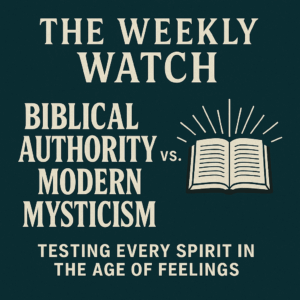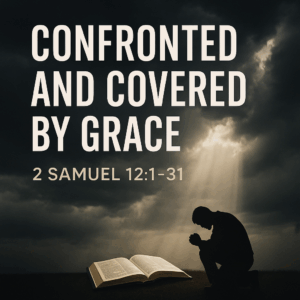⏱️ Estimated Reading Time: 6 min read
A few summers ago, my three oldest kids and I discovered a great hiking trail just a few miles from where we live. It’s a trail through the woods that winds in and out of several parks just on the east side of the St. Joseph River, complete with a river shelter and several picnic areas and playgrounds just off the trail. The kids were enthralled, and our little hike led into a natural conversation about walking the right path or way in life.
The word walk is one of the main biblical metaphors for living the Christian life. Sometimes I think its significance is lost on us today. In the ancient world, walking was the ordinary person’s primary mode of transportation. The best way to get from here to there was to walk. They didn’t have trains, planes, and automobiles—even the bicycle wasn’t invented until the nineteenth century! Horses, at least in ancient Israel, were scarce and primarily used in battle. So most journeys were taken on foot by walking. We see this especially in the life of Jesus. As someone once noted, Jesus is the most persistent pedestrian in the Bible!
So the idea of walking in a way was the perfect picture for an ancient person to understand the moral and spiritual life. We find the metaphor early in Genesis where God walked in the Garden of Eden in the cool of the day (Genesis 3:8), picturing God’s active presence with humanity in their original created state. That fellowship was interrupted, of course, by the Fall. But as the redemption story unfolds, God once again walks with his people. “I will walk among you and be your God,” God says to Israel (Leviticus 26:12).
He not only walks with us, but we walk with him. Both Enoch and Noah are commended for walking with God (Genesis 5:22, 24; 6:9), and the Lord said to Abraham, “I am God Almighty; walk before me, and be blameless” (Genesis 17:1). The New Testament has many instances of this imagery as well. John and Paul describe Christian behavior in terms of walking in light rather than darkness, walking as Jesus walked, walking in wisdom, walking in newness of life, walking in good works, walking in the Spirit, and so on.
But to walk, one must have a way, a road, or a path. The Scriptures are full of this imagery, and it is especially obvious in Old Testament poetry, wisdom literature, and the prophetic books. The first psalm contrasts the ways of the righteous and wicked, commending the man who “walks not in the counsel of the wicked, nor stands in the way of sinners, nor sits in the seat of scoffers” (Psalm 1:1). The first verse of Psalm 119 echoes that commendation, declaring the blessedness of “those whose way is blameless who walk in the law of the Lord,” while Proverbs 4:18 says that “the path of the righteous is like the light of dawn, which shines brighter and brighter until full day.” Later, Jesus taught about discipleship and salvation by contrasting the hard way that leads to life with the easy way that leads to destruction (Matthew 7:13–14), and Luke describes the early Christians as followers of “the Way” (Acts 9:2; 19:9, 23; 22:4; 24:14, 22).
This brief survey of walk and way imagery in Scripture (and there are dozens and dozens of other texts—I encourage you to search them out!) suggests several insights about Christian living:
(1) First of all, it involves effort, movement, and action. Walking requires motion, and so does following Jesus. The Christian life is not a passive or static state. Ours is an active spirituality.
(2) But it also involves choices. You must choose a road, a path, a way in which to walk. The Scriptures variously describe this path as a way of life, light, love, truth, righteousness, etc. But what is clear is that there is a way that leads to salvation and a way that doesn’t.
The Pilgrim’s Progress, John Bunyan’s classic allegory about the journey of faith, vividly captures this reality. I love this book and think it is worth repeated readings. Spurgeon reportedly read it over a hundred times! I haven’t read it a hundred times, but I do keep coming back to it. I recently realized that Bunyan not only describes the Christian’s journey through life with all its attending obstacles, detours, and dangers but also provides a startling array of characters to illustrate defective faith. It’s a study in apostasy every bit as much as it is a portrayal of the perseverance of the saints. When we meet Obstinate, Pliable, Ignorance, Hypocrisy, Worldly Wiseman, Talkative, Formalist, Legality, and all the rest, we’re not just encountering transparent examples of unbelievers and apostates. We’re also seeing in detail the kinds of spiritual problems that get people off track. The one thing all of these characters have in common is that they didn’t continue walking on the way to the Celestial City.
(3) Therefore, we must keep walking in the right way. Whenever we realize we’ve gotten off the path, we must by God’s grace find the way back on. Bunyan’s Christian does this again and again, and he makes it all the way home only with dogged persistence. So must you and I. The most fatal thing is to stop walking.
(4) Finally, both Scripture and Bunyan remind us that walking often involves companionship. We must walk with the Lord (Genesis 5:22; Revelation 3:4), but we must also walk with others who follow him: “Whoever walks with the wise becomes wise, but the companion of fools will suffer harm” (Proverbs 13:20). Christian met numerous cases of dubious character and doubtful faith, but he also had companions like Faithful and Hopeful who helped him in the journey.
Like Christian, we also need good spiritual companions, which reminds me to ask—have you found a good church yet? Don’t underestimate the importance of true Christian fellowship for your life. It will make a huge difference in your spiritual progress.
This post is a lightly edited excerpt from my book Active Spirituality: Grace and Effort in the Christian Life.




